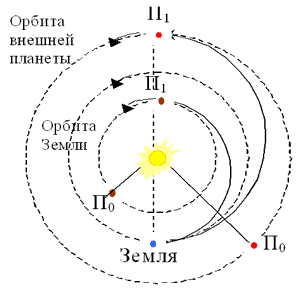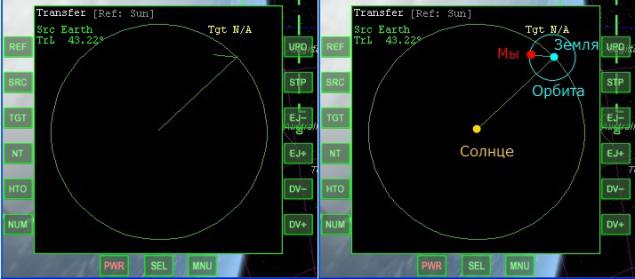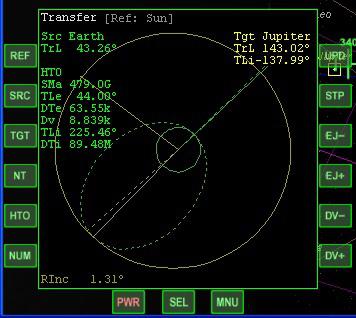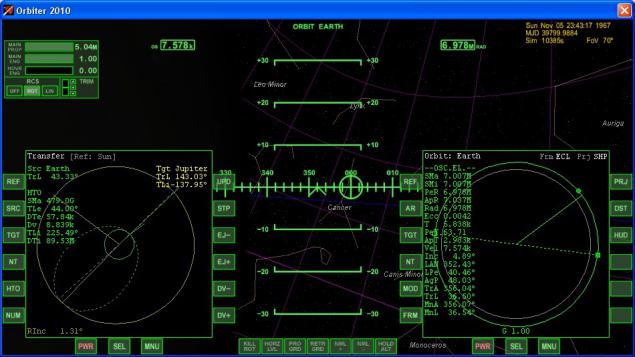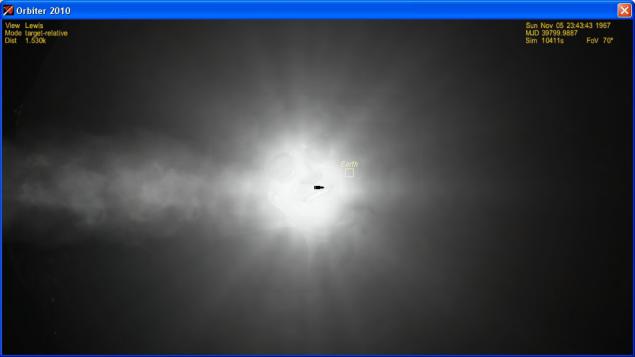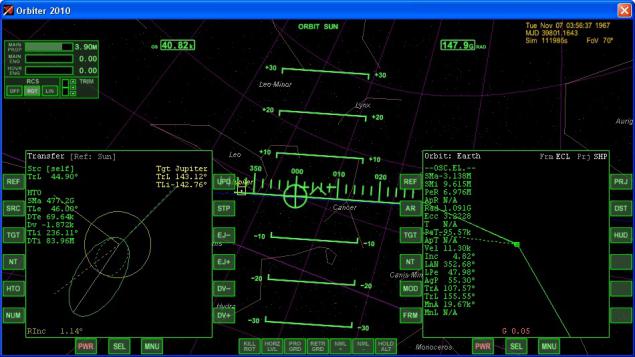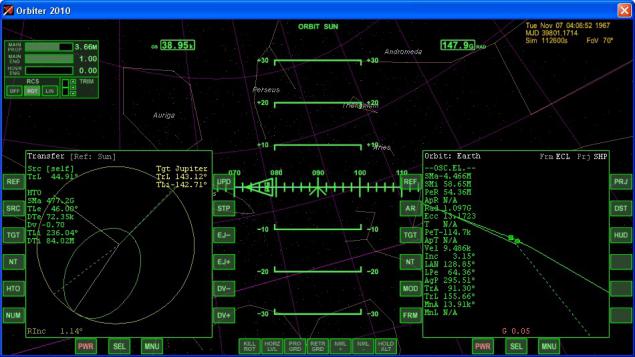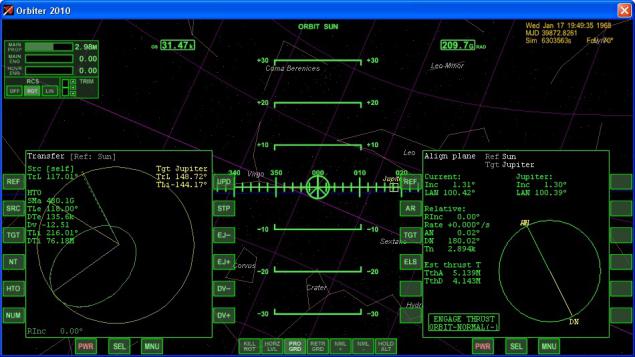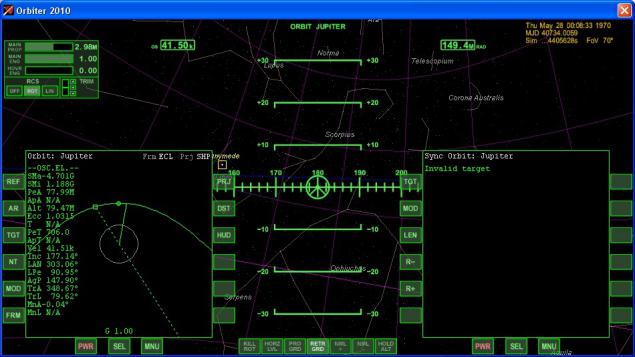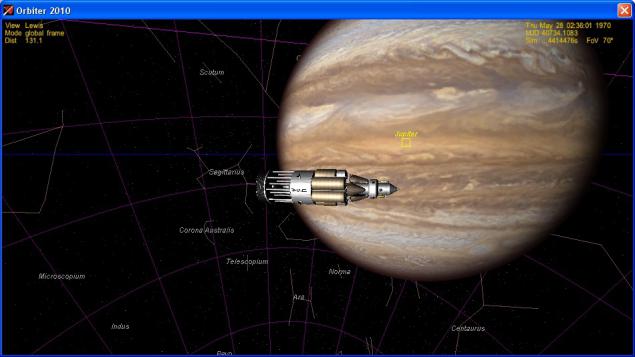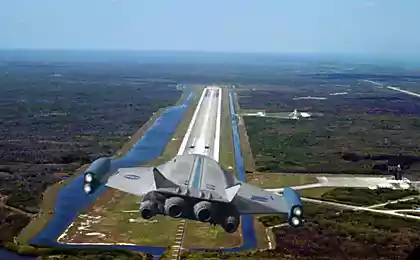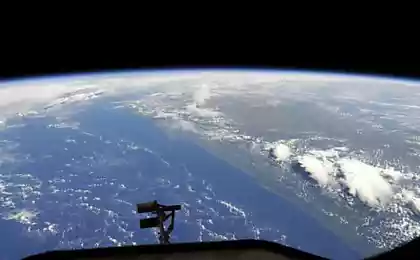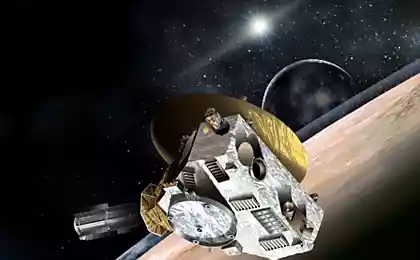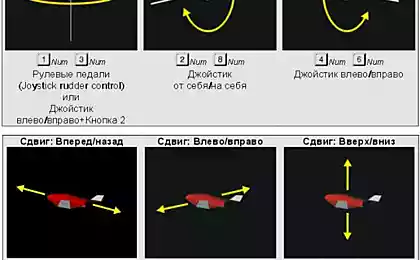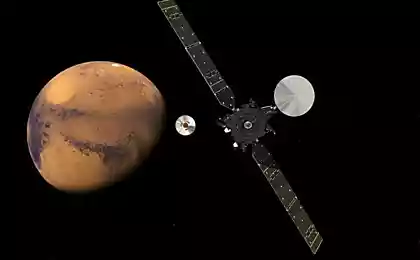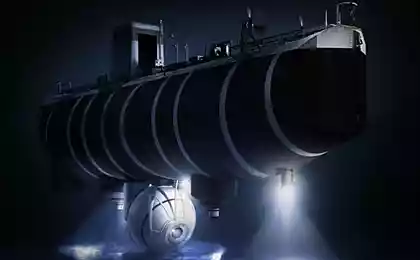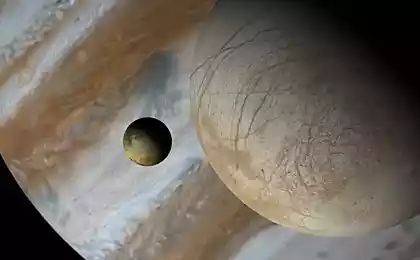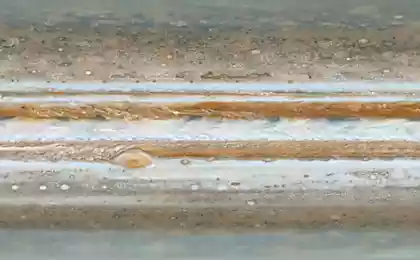1748
On vzryvolёte to Jupiter
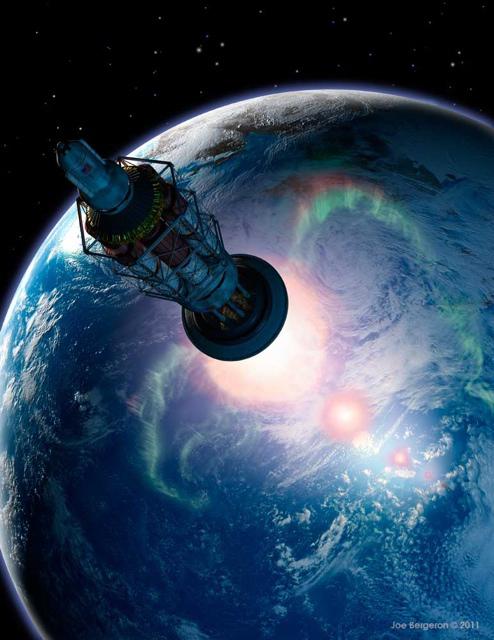
The limitations of chemical rockets was clear even before the regular space launches. Tsiolkovsky rocket equation just says that we are familiar engines can fly to the moon (starting rocket thousand tons in the three initial mass and returning to the boat several tons), with great difficulty, to Mars (with many times the worst ratio initial / final mass ), but to conquer the solar system on chemical rockets can not. Therefore, in the middle of the twentieth century began to appear alternative projects, the most striking of which was the atomic vzryvolёt (pulse rocket). In this post we will talk about its design, the history of creation, prospects in the 21st century, and still fly on it to Jupiter in Orbiter'e.
Orion h4>
The idea of the project h5> Reactions of atomic fission and nuclear fusion gave humanity a source of great energy. It is therefore logical that the first thought up to use atomic bombs to move in space, developers of nuclear weapons. According to the document the Los Alamos National Laboratory, Stanislaw Ulam , member of the Manhattan Project, co-inventor of the hydrogen bomb scheme Teller-Ulam suggested the idea nuclear rocket engine in 1946. According to the original idea, the ship nuke that undermine and evaporates drive reset after the bomb. In the 50s the idea developed Ted Taylor and Фриман Dyson (Dyson sphere - also his idea). The resulting project was as follows:
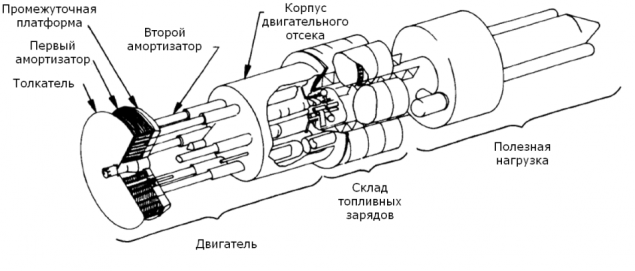
Aft stove gets hit plasma from the nuclear charge, and the momentum of the plasma through two levels of shock transmitted to the ship. As of mid-flight charges to use nuclear devices producing directed explosion:

Molded shell of beryllium oxide and uranium nuclear explosion made the charge direction and tungsten turned into a cigar-shaped beam of plasma, which beat the feed pusher plate. Pusher left at the forward position, and then, under the influence of depreciation, return to the starting position. The cycle was repeated.

Project History h5> The "Orion" began in 1958. It was a full-fledged engineering work, although, of course, surprising in its scope - development projects had a weight of 880 tons for near-Earth spacecraft to 8,000,000 tons for the "advanced interplanetary." Were built scale models of ships that use conventional explosives to verify the stability of flight.
Very short video of one test:
Declassified Chronicle 1958 test different layouts:
In the 60 years the project has started to have problems. Firstly, the unit receives a large and very expensive. In search of money turned out that the "Orion" are interested in the military, but it had to do so armed ship. President Kennedy saw the layout of the atomic vzryvolёta atomic cannons, missiles and other weapons, was horrified, and the chances of funding plummeted. Secondly, launches all types of vehicles, except the youngest, had to be made from the Earth to the marching nuclear engines, which meant that hundreds of nuclear explosions in the atmosphere, and no one is inspired on the background of public protests against nuclear testing. Third, test the ship hampered the 1963 Treaty banning nuclear tests in the atmosphere, outer space and under water. Nevertheless, the pusher plate had to check on a couple of nuclear tests, and, within a single explosion, calculations confirm. As a result, despite the fact that at some point in the project "Orion" was seen as a real alternative to missiles von Braun and the lunar program, as a result of "Orion" was closed in the area in 1965.
Life after the closing h5> After closing the project moved into the development of a theoretical plane. Atomic-pulse drive promised a unique opportunity, so based on it began to develop interstellar ships. Freeman Dyson has created two projects for the study of Alpha Centauri-flight trajectory with no inhibition, one hundred thousand tons of initial mass (stomost 0, 1 annual US GDP, the flight 133 years), the other ten million tons (1 annual cost of US GDP, while flight 1330 years). Related "Orion" are projects «Daedalus» and « Longshot », although they use more complex and have not yet mastered engines. Also, the project was coined «Medusa» , where instead of the pusher plate using a special sail-parachute. Despite the fact that the implementation of the project to proceed, and no one does not give money, a group of enthusiasts coming up with new projects. For example, in 2007, published an article describing the Mini-Mag Orion - small "Orion", which undermine the atomic charges carried by the magnetic field.
Project Evaluation h5> Advantages:
«Orion" implement at the level of technology of forty years ago. A unique engine combines great traction and high specific impulse. In chemical rockets great traction, but a small boost in electric propulsion - a big boost, but little traction. Ability to interstellar travel. Nuclear "Orion" can theoretically accelerate to 3% -5% of the speed of light, fusion - 8% -10% on thermonuclear annihilation to drive catalysis - 10% and annihilation "matter-antimatter" - 50% -80%. Flight to Alpha Centauri at 0, 1 Takes '44 and 36 days on the acceleration / deceleration to acceleration of 1 g. Weaknesses:
Pollution Earth products of nuclear explosions at the start of the flight from the ground and in the atmosphere. The presence of moving parts, it requires the absolute reliability of the second shock absorber under conditions of thousands of explosions. Use atomic charges - the problem of control and security. Large and expensive. Vicious circle - is no pressing need to withdraw thousands of tons into orbit, nobody will give money for the development of the unit, which is capable of these thousands of tons of lead, and the need and will not appear.



